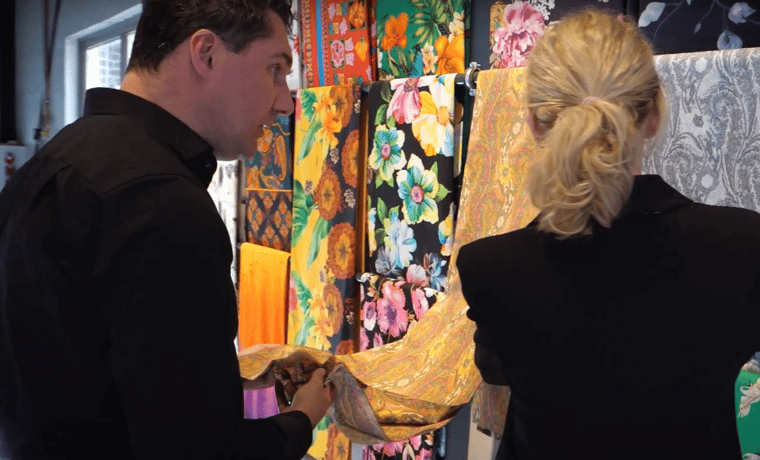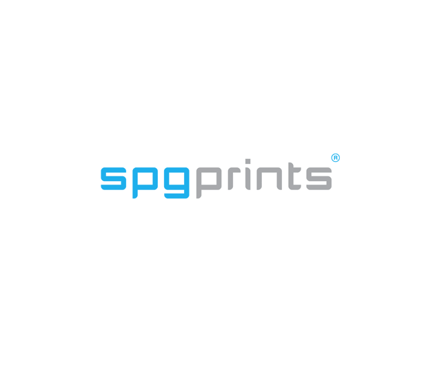A logical question, especially when you consider that there are manufacturers that offer single-pass digital machines with one or more rotary stations implemented. It does not look like an impossible job and a printer that can print digitally as well as rotary sounds like a useful asset for many companies. However, a hybrid printing machine is rarely a sound investment. In this blog, I will explain why.
Note: we assume in this blog that a customer’s desire for a hybrid printer is based on the wish to combine both technologies in the same print job. For a hybrid printing machine that prints either only rotary or only digital in a job, all the arguments in this blog would not be valid.
A hybrid printing machine: 3 considerations to make
As mentioned, the wish for a hybrid printing machine makes sense. There are some types of designs that would ideally be printed partly with digital and partly with rotary. For example, printing a plain background is more challenging and more expensive when using digital printing. For a colorful flower print with a plain black background, the idea of printing the background with rotary screen printing and to print the flowers digitally sounds attractive.
Another example is a golden pattern on a digital print. Gold cannot be printed with digital textile printing, so this pattern has to be done separately with a rotary screen printer.
The most obvious solution for these issues is one printer that can print both digital and rotary, so you can make one product with the same printer.
Good news: a hybrid printing machine is technically possible. However, there are three important considerations you have to make.
1. The loss of certain benefits of digital printing
Perhaps the most prominent disadvantage of a hybrid printing machine is that you miss out on certain advantages of digital printing:
- Unlimited repeat length
- Time to first print
- Efficiency
One of the great advantages of digital textile printing is its flexibility. In a rotary screen printer, the same design returns as soon as the screen has made one full rotation. This means you are bound to a repeat length of the design that is equal to the circumference of the screen. The complete freedom of repeat length that you have with digital textile printing is therefore reduced in a hybrid printing machine.
In addition, your time to first print will be a lot longer. After all, in order to print with a rotary station, the screen will have to be engraved first. Even if you have your own engraving machine, this will still take a few hours. If you have to outsource the engraving, your time to first print normally takes at least a few days extra, but often this time increases with 1-2 weeks.
Another difference between rotary and digital textile printing is the fact that rotary screen printers are far from printing all the time. When you want to change a design, the previous screens have to be removed, the paste has to be taken out, the machine has to be cleaned, and new paste has to be set up. Because of this, rotary screen printers that are printing fashion with relatively short run lengths per design, are usually printing only about 25-50% of the time. This will also be true for a hybrid printing machine, nullifying the biggest advantage of digital printing: its efficiency.
2. Printing order
Another consideration you have to make if you are using a hybrid printing machine is the order of printing. Do you print the digital part of the design first, or should you start with the part of the design that you want to print with rotary screen printing? Let's take the example of the flowers with a black background. Do you print the flowers first or do you start with the background?
The advantage of starting to print the flowers digitally is that the black background provides coverage. This means you could digitally print the flowers a little bigger and then print the background over them with the black screen. This way you don't have any registering problems. But even with the slightest misfit between the screen design and the digital print, there will come a registering problem after tenths or hundreds of screen rotations. This means you will need an operator to finetune the rotary printing part to keep registering.
Another consideration is that the wet digital flower print is physically touched by the screen, which can lead to smearing in the print or ghosting because part of the flower image will stick to the screen and be printed back on the fabric in the next rotation of the screen.
To avoid those negative side effects one can argue to start with the rotary screen first. The digital stations don’t touch the wet rotary printed fabric, so there is no danger of smearing or ghosting. Registering can be arranged by using cameras that find the empty flower space in the design, and then adjusting the digital printing pattern accordingly.
This is technically possible, but requires extra cameras and quite some computer power because the adjustment of the digital file (when exactly to fire which drops?) has to happen ‘on the fly’. In a single-pass digital printer with a few hundred printheads, each head having over 2.000 nozzles and each nozzle jetting 20-30.000 droplets per second. That is quite some calculation to happen in a split second. Therefore, the hybrid printing machine will become significantly more expensive.
3.Chemicals for your hybrid printing machine: pre-treatment and printing paste
Reactive, acid, and disperse inks need chemicals to bind the color molecules to the fibers during the steaming process. In rotary screen printing, those chemicals are part of the printing paste. In digital, this is not possible because digital inks would become too viscous. Therefore digital printing requires pre-treatment to apply those chemicals to the fabric upfront.
Combining digital pre-treatment with rotary paste means that you have an overdose of chemicals in a hybrid printing machine. This can be solved by removing part of the chemicals from the printing paste, but then the paste might become too liquid for the rotary screen and has to be thickened to avoid dripping.
Very likely, this finetuning of the printing paste will also depend on the cloth and the design in question. For example, how absorbent is the fabric? Do you print small or large flowers on a black background? This determines the ratio digital-rotary and therefore the ratio of binding chemicals in pretreatment and in the paste.
For printing with a hybrid printing machine, you have to figure out a lot when it comes to chemicals and resources. This is a time-consuming process.
Alternatives for a Hybrid Printing Machine
There may be a solution to this pretreatment challenge by adding 2 rotary stations before the digital printing part. The first rotary station prints the background so it has a screen where the screen holes for the black part are open and the holes for the flower part are closed. The second rotary screen print station has a screen that is the slide negative of the screen of the first station. So the screen holes for the black part are closed and the holes for the flower part are open. So this screen will “print” a pre-treatment on the spot where the flowers will come. This way you only pre-treat the spots where digital ink is supposed to come. This means you can use your usual printing paste for printing the background.
Having said that, we can go back to the elementary question of why you would want to print the background not with digital in the first place? There are two drivers for this: cost and the fear of a non-uniform background when printing digital.
The hybrid printing machine will become quite expensive as well, making the cost factor an issue for both solutions. The fear of non-uniform backgrounds might be resolved by placing a printing station with printheads that print large drops in a low resolution in your digital machine. Large drops equal large holes, which means clogging is less likely. This enables your digital printer to print blotches, while you don't have to build in rotary screen printing and thus avoid the mentioned disadvantages of hybrid printing.
Hybrid printing machine: useful or utopia?
In short, it is possible to develop a hybrid printing machine and there are in fact suppliers that make such machines. However, there is not yet a single user who makes full use of a hybrid printing machine.
The technical possibility for a hybrid printing machine is there, but the economic attractiveness is not. The demand for such printers is explainable, but if you look at the facts, the hybrid printing machine is not an economical solution. That’s because implementing screens on a digital machine only makes sense if you only print large run lengths and always make the same kind of design. And you don’t need digital for that.
In this blog, a few technical problems of the hybrid printing machine have been highlighted. Even if you can already solve or accept these issues, you have to think carefully about whether there is an economic justification for this investment. How much work do you actually have for such a hybrid printing machine? Does it really have added value for your company and production process?
Most likely, the answer to these questions is no. Using either digital or rotary printers is still the most efficient solution. That's why SPGPrints developed the Archer+ Technology that enables our PIKE Single-Pass Printing Platform and our JAVELIN scanning printers to be able to print perfect uniform blotches.
Busy making a strategic choice in digital textile printing, rotary screen printing or a combination of both? To help you with this, we have created a free Strategic Guide. You can download it here:






